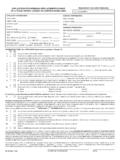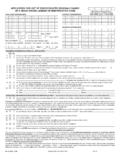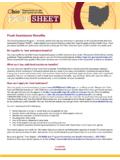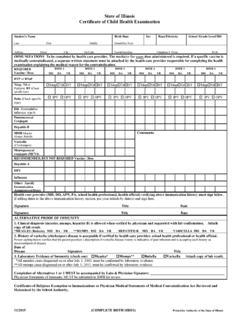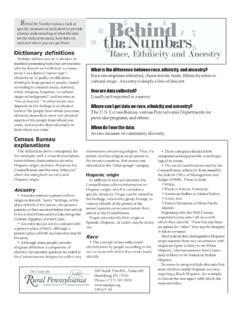Transcription of Fact Sheet 1: Introduction to Harmony in the Workplace
1 Harmony in the Workplace delivering the diversity dividend Fact Sheet 1: Introduction to Harmony in the Workplace Harmony in the Workplace is about working with 3. How do you maximise the value of cultural diversity Australian businesses and organisations to create a in your Workplace and evaluate its effectiveness? culturally diverse and inclusive workforce. What is cultural diversity? What you'll learn from the factsheets While there are many definitions of culture, most have The following series of factsheets will help leaders, the same core elements.
2 Culture' describes a system of managers, employees and trainers to: values and meanings shared by a group, which shape the behaviours expected in a particular situation and Discuss the cultural diversity in your organisation how behaviour is interpreted1. and maximise its value Encourage positive cultural diversity management Groups with an identifiable culture can be large or small. While culture' generally refers to a large group Remove myths surrounding cultural diversity of people, within a group there can be sub-cultures Discuss the legal parameters and frameworks that consisting of smaller groups with their own identities.
3 Employers and staff must be aware of to create a Of course, unique cultures and sub-cultures harmonious and inclusive Workplace culture. can develop in any group sharing common characteristics such as age, gender, sexual Harmony in the Workplace The factsheets highlight open and hidden racial and orientation, religion, education and so on. religious discrimination that can affect the ability Factsheet 1. Cultures of different groups often overlap of an employee from a diverse background to gain and one person can have many different employment and feel positive and connected in the cultural influences.
4 Also show how Culture is therefore a relative and your organisation contextual concept2. This is particularly true can benefit from regarding assumptions made about culture Australia's culturally and stereotypes, which are formed by a diverse workforce by generalised view of culture. making full use of the knowledge, experience and diverse skills that For the purposes of these factsheets, cultural workers of culturally diversity' refers to differences between and linguistically cultures which are associated with race, diverse (CALD) ethnicity, national or geographical origin.
5 Backgrounds will bring. Three core questions support each factsheet's content As mentioned, in the Workplace , cultural diversity'. and, as an employer, should be considered in relation to or cultural identity' usually relate to ethnic or your staff: national background/origin. Culture' can also refer to organisational culture, which put simply means the way 1. How do you recognise cultural diversity and the we do things here'. Again, ethnic/national culture and diversity among your employees? organisational culture overlap. Your challenge, as an employer, is to ensure that your organisational culture 2.
6 How do you talk about cultural diversity (if at all)? (and its sub-cultures) is inclusive of everyone, including CALD people. 2013 Federation of Ethnic Communities' Councils of Australia (FECCA) | | 02 6282 5755 | Harmony Harmony in the Workplace delivering the diversity Factsheet 1. dividend in the Workplace Terms often used to discuss culture and cultural relatively easy transition, many experience challenges in diversity in the Workplace include: adjusting to life in a new country. Ethnicity'. With these considerations in mind, our factsheets Background' present an overview of the key themes and issues How one identifies themself' regarding cultural diversity in Australian workplaces, including tips and suggestions on how to enhance the Cultural heritage'.
7 Benefits of cultural diversity in your organisation. Nationality'. Country of birth/origin' About the contributors We would like to acknowledge the contributions made Language do's and by participant organisations and the Harmony in the don'ts regarding Workplace Project Steering Committee who provided cultural diversity substantive insights and guided the development of is covered in more resources. The Project Steering Committee included: detail in Factsheet 6: Becoming Mr Pino Migliorino (FECCA Chair) - Project Steering Confident and Committee Chair Competent in Professor Santina Bertone (Swinburne University of Talking about Technology).
8 Workplace Ms Katriina Tahka (Diversity Council of Australia). Diversity. Ms Sandra Jeffery (Multicultural and Settlement Policy Branch, DIAC). Making it work: Dr Loucas Nicolaou (FECCA CEO). cultural awareness in Australia Ms Tanya von Ahlefeldt (FECCA Policy Officer) - Being culturally aware' means recognising that Project Coordinator and Lead Author. everyone has a cultural background influencing and impacting how they interpret the world and perceive FECCA is grateful for the knowledge and guidance others around them. So, being culturally aware or committed by the above people.
9 Culturally competent' doesn't mean being an expert on every culture or having an answer to every cultural question and issue. It means acknowledging that different perspectives and experiences exist as a result of everyone's different cultural background and life experiences, and that embracing this difference is the key to exploring cultural issues effectively and References appropriately. 1. Peoples, J and Bailey, G. 2012. Humanity: An Introduction to Being culturally aware and adaptable is everyone's Cultural Anthropology, Ninth Edition.
10 Belmont, CA: Wadsworth. responsibility. It's also in everyone's interest to gain 2. Hong, Y, Benet-Martinez, V, Chiu C, and Morris, M. 2003. an understanding of how Australian immigration Boundaries of Cultural Influence: Constructive Activation as a mechanisms work and how they impact on a person's Mechanism for Cultural Differences in Social Perception'. life experience. While some immigrants undergo a Journal of Cross-Cultural Psychology 34(4): 453-464. FECCA would like to acknowledge the generous assistance and critical review of this series of factsheets provided by the members of FECCA's Harmony in the Workplace Project Steering Committee.



